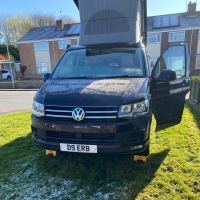Erbster
VIP Member
Yet another t(h)read on tyres.
I need to get a replacement tyre for my MY17 Ocean, which has the standard 215/60R17 tyres. I know what those numbers mean (I think). I'm confused about load and speed rating - when I search online, these two seem to be mixed together. My understanding is that the Cali needs a tyre with a load rating of 109 or 107 (not 108?). Is higher better? I've been told T is the speed rating. Is a "higher" letter better? I am also told that the Ocean needs commercial tyres (understandably). How do I know that the tyre is "commercial" when I search online; for example is that the same as a tyre for an SUV?
I've tried googling the answers to these, but I just can't get my head around it...
I need to get a replacement tyre for my MY17 Ocean, which has the standard 215/60R17 tyres. I know what those numbers mean (I think). I'm confused about load and speed rating - when I search online, these two seem to be mixed together. My understanding is that the Cali needs a tyre with a load rating of 109 or 107 (not 108?). Is higher better? I've been told T is the speed rating. Is a "higher" letter better? I am also told that the Ocean needs commercial tyres (understandably). How do I know that the tyre is "commercial" when I search online; for example is that the same as a tyre for an SUV?
I've tried googling the answers to these, but I just can't get my head around it...
















